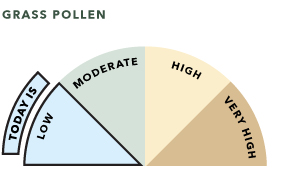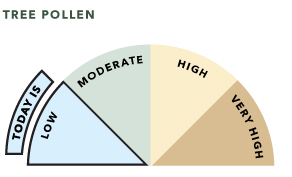THE POLLEN COUNTS ARE REPORTED AS PARTICLES OF POLLEN PER CUBIC METER OF AIR SEEN IN THE PRIOR 24 HOURS. THE COUNTING METHOD IS BY MY MANUAL IDENTIFICATION OF POLLENS STAINED ON A MICROSOPE SLIDE DAILY COLLECTED IN A BURKARD AIR SAMPLER AS WE HAVE BEEN DOING FOR DECADES.
Wednesday, October 1, 2025, Grass pollen was ABSENT, Tree pollen ABSENT and Weed pollen was ABSENT.
The most recent day from our sampler showed an absence of all pollen types. With the rainy weather it is unlikely we will see much pollen activity. Not uncommon to sometimes see various, random pollen emerge out of their season with some weather changes, but nothing has been consistent. We will be using our multi-day counting method and we will record the findings 1 to 2 times weekly on this page.
Kraig W. Jacobson, MD
Brennon T. Birch RN

